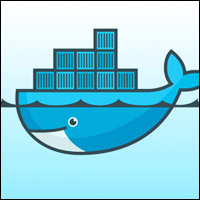
Well before search titan Google released its tool to help developers scour the Web for code and connected information, Koders was serving up software search results, starting with open source software and now spreading out to include closed code repositories as well.
Since launching its first beta in 2004, Koders has expanded its search to include more than 424 million lines of code, at the same time honing in on what developers are demanding.
LinuxInsider talked with Koders co-founder and CEO Darren Rush to find out how the hunt for code has changed, and what’s next in code search results.
LinuxInsider: How has code search changed since Koders began in 2004?
Darren Rush:
In 2004, Koders launched the first comprehensive search engine for open source. Since then, we’ve expanded the technology to allow developers to find open source and enterprise code with the introduction of the Koders Enterprise Edition.
In addition, we’ve helped make code search an integral part of the development workflow with IDE plugins for Eclipse and Visual Studio. At a macro level, there is more quality code out there than ever before, and search has become a critical tool to help developers find the best quality code and improve their software applications.
LI: What has this meant for software development?
Rush:
Our experience has been that enterprise and open source code search very quickly becomes a requisite for professional developers. Once they use it, it becomes an integral part of the development process and a tool that they don’t want to do without.
For developers, code search enables teams to move up the learning curve faster, resolve bugs faster, and better leverage existing code. Management, on the other hand, has come to rely on Koders for detailed analytics that provide never-before possible insights into the code base, open source compliance and reuse effectiveness.
LI: What has Google’s entry into code search done in the space?
Rush:
Google’s entry is increasing visibility of the code search category in very positive ways. As the leader in the space, Koders is well positioned to take advantage of this. Our focus on code inside and outside the enterprise, support for enterprise tools and IDEs, and dedication to developers is making our leadership in the space even more pronounced.
LI: When it comes to open source software, can developers today effectively and efficiently find code and related information?
Rush:
Yes, Koders.com has created a comprehensive map of the open source landscape that represents tens of thousands of projects from hundreds of repositories. By providing deep code search, coupled with metadata and links to the projects themselves, developers have an excellent tool to discover quality projects to leverage in their applications.
Our IDE Plugins for Eclipse and Visual Studio also include SmartSearch, which goes a step beyond and makes proactive suggestions to developers as they code — to guide them toward opportunities for reuse — before they hit a road block or reinvent the wheel.
LI: What about proprietary, or closed, code — what is Koders doing with regard to code that is not free or open source?
Rush:
The Koders Enterprise Edition (now in version 1.2) is designed for this exact case. It allows organizations with private or proprietary code bases to make that code searchable among the internal developers and partners that need access. Code inside the firewall is of critical importance, and the Koders Enterprise product is helping companies with some very high value problems including detection on internal branching, accelerating bug resolutions, and improving collaboration for distributed teams.
LI: How do you access and then provide access to private code repositories?
Rush:
Our enterprise product has built-in support for version control systems including IBM Rational ClearCase, Perforce, Microsoft Team Foundation System and Visual Source Safe, as well as CVS, Subversion, archive-based (zip, gz, etc.) and ad-hoc systems. Our crawling and indexing technology called “Kodebot,” connects directly to these systems, indexing code where it lives. Within an hour of installation, an enterprise can index code and make it searchable through the Koders Web interface. The time to recognizable value for teams is incredibly short.
LI: What happens when code that is not supposed to be available is searchable and findable?
Rush:
Koders is becoming an invaluable research tool for this purpose. We have helped a couple of companies in the licensed source code space identify open source projects where their code had been introduced. We worked with them to contact the project owners and helped facilitate [removal of] their code.
Similarly, we have helped companies identify OSS code that was never supposed to have found its way into the organization’s propriety code base. Resolving these types of code compliance issues are of great benefit as they allow companies to avoid potential legal pitfalls from contaminated code becoming embedded in commercial applications.
LI: What’s next for code search, and what features and functions are anticipated or in demand?
Rush:
Open source is just part of the puzzle. Access to code inside the enterprise and quasi-open sources, such as developer networks, is important to developers. We are focused on providing fast, effective code search to developers from every source of quality code.


















































